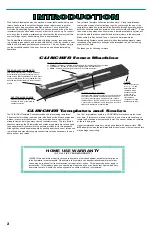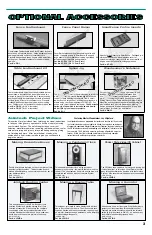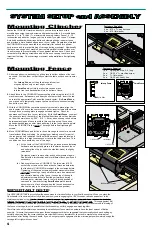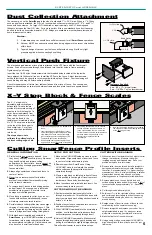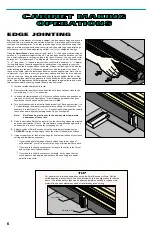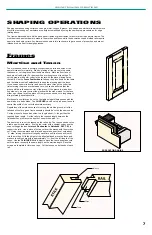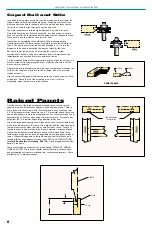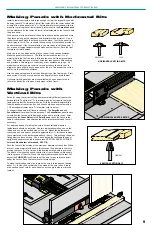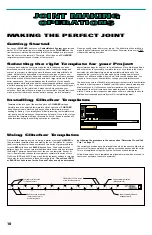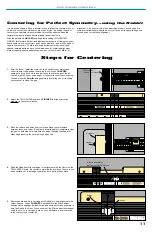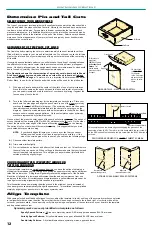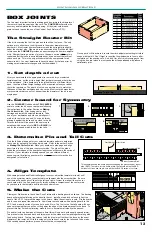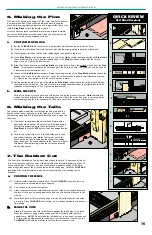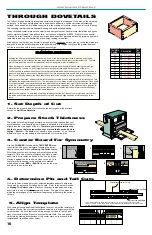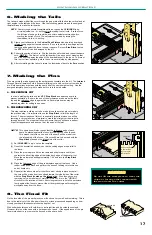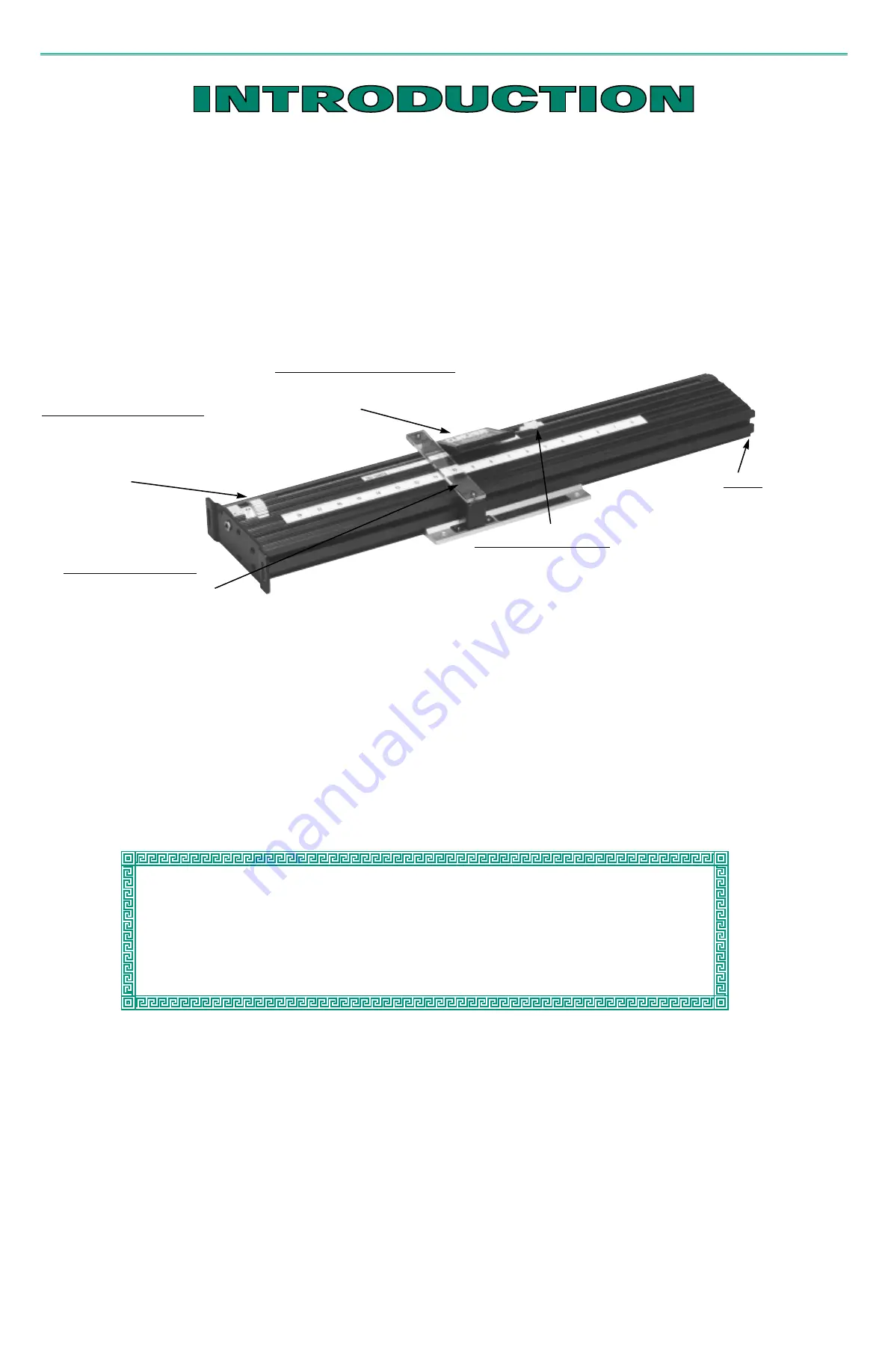
With Jointech leading the way, the method of router table woodworking and
joinery has become the most exciting and sought after means to perform
shaping and cutting operations with high precision. The Jointech Ultra-
Precision Woodworking System which you have purchased will be the best
investment that you have made over any other tool in your shop. Far superi-
or to any other in quality, workmanship and versatility, the accuracy that this
new tool brings to your woodworking shop is unprecedented.
The CabinetMaker’s System is capable of jointing, routing, rabbeting, dado-
ing, making raised panels, and rail and stile frames. It can function as a saw
table fence, drill press positioner and much more. This one System will give
you the versatility needed to perform fine joinery and all cabinet-making
operations.
The Jointech Template Collection includes sixty, 16” long templates and
scales, plus step-by-step instructions to guide you through the use of the
templates to make box joints, half-blind dovetails, through dovetails, double
dovetails, double-double box joints, and the exotic Jointech Boxtail
TM
. Even
the novice, who perhaps has never made a simple dovetail or box joint, will
quickly be able to produce beautiful and intricate joinery in their projects.
Made entirely in San Antonio, Texas, Jointech’s American-made
Woodworking Systems have been met with enthusiastic approval of many
thousands of woodworkers, hobbyist and professional, as well as leading
experts in the field.
We thank you for choosing Jointech.
CLI NCH E R
Fence Machine
CLI NCH E R
Templates and Scales
JOINTECH warrants this product for five years from date of purchase against any defects that are due
to faulty material or workmanship. Please return the complete unit, transportation prepaid (proof of pur-
chase may be required) for free replacement or repair at our option. This warranty does not apply to
accessories. This warranty gives you specific legal rights and you may have other rights which vary
from state to state. Should you have any questions, contact Jointech, Incorporated.
HOME USE WARRANTY
(A FULL FIVE YEAR WARRANTY)
MICRO-ADJUST THUMBWHEEL
Each detent represents .001” of fence movement.
Decal indicates which direction fence will move
during rotation. After an adjustment, it’s scale sleeve
can be re-calibrated to Zero. Use thumbwheel only
when the cam-handle clamp is in the micro-adjust
position.
CAM-HANDLE CLAMP POSITIONS:
1) UPRIGHT - Carriage is released from leadscrew for full movement over its range.
2) 45 DEGREES - Position to make micro-adjustments with thumbwheel.
3) DOWN - Carriage is fully locked in place for a cutting operation.
ANTI-PARALLAX CURSOR
Visually align both top and bottom
hairlines to scale or template to
eliminate parallax.
CENTER FINDER
(RABBIT)
The
Rabbit and TRU-Center Scale are used to find the
exact center of a board. Follow directions on page 11
to achieve joint symmetry using any of the Jointech
templates. Once the TRU-Center Scale is calibrated to
a given cutter or blade kerf, only the Rabbit is used to
find center regardless of board width.
T-SLOT
A 5/8” wide flat nut
or a 1/2” - 14 deg.
dovetailed block
combined with a
handle or thumb-
screw can be
inserted into this
slot to make a
convenient carriage
handle and/or stop.
2
The
CLINCHER Template Collection includes 48 joint-making templates,
9 dual scales for making repetitive cuts, infeed and outfeed fence scales and
a blank inch scale for custom use. They are made from a special, high-
strength vinyl and will give many years of satisfactory use. The two printed
sheets comprising the 60 templates and scales are partially die cut and need
to be separated for insertion into the pockets provided for in this handbook.
Although they should separate easily by peeling apart, because of tolerances
in materials and manufacturing processes it may also be necessary to use a
sharp knife or razor blade.
The fit of a template or scale in a
CLINCHER slot may become too loose
over time. If this occurs, make a mild kink in one or more places along its
length to add tension when replaced in slot. You cannot damage a template
or scale in doing this.
If your templates become dirty, simply wipe them with a damp cloth. DO
NOT attempt to clean the templates with alcohol or any other solvent as this
may damage the printing.



